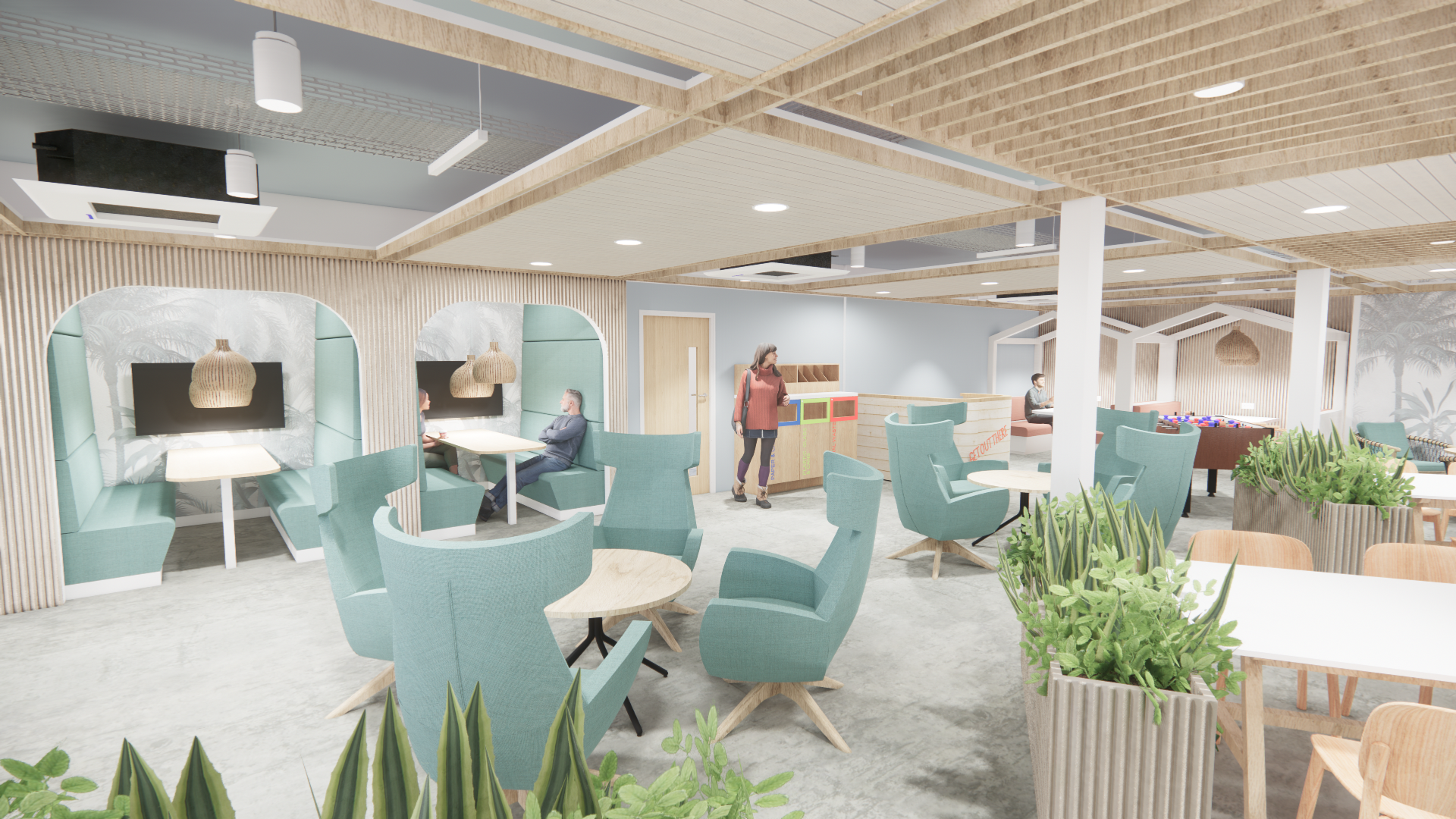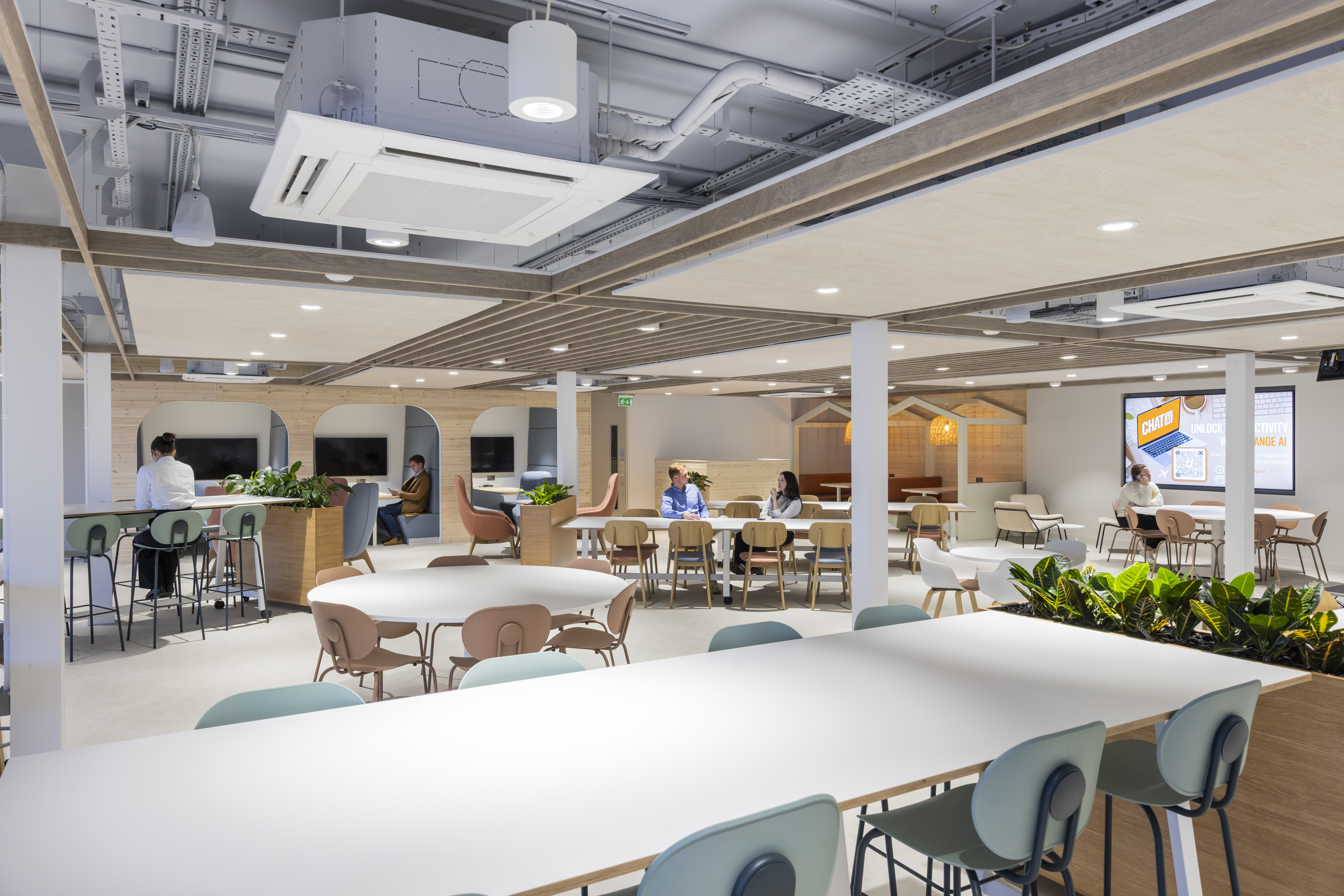easyJet Airlines were looking to implement an organisational move to 60% of the month in the office for their employees based at Hangar 89, an 80,000ft2 space adjacent to London Luton Airport. Additionally, they had a vision of improving the culture and collaboration between departments, as well as encouraging and increasing learning by osmosis within and between teams. However there were a few challenges to overcome; firstly, the around the capacity and utilisation of their space, and secondly, they wanted to ensure that the space was utilised effectively enabling capacity to come together more and work in a way that suited many different departments. To fully understand and address these challenges, we took the easyJet team through our full workspace strategy process to engage with their teams, quantify the data and come up with a plan that would result in a fantastic collaborative environment and support coming together more.

The biggest challenge was completing a phased project within the tight deadlines, all whilst the building was in occupation.
With a larger organisation comes the need to balance the needs of different teams and individuals, and making sure it’s a great space for all.
There were restrictions that came with working in a 1970s building, but the new design has enabled working styles and functions that weren't possible before, overcoming one of easyJet's main initial challenges.

.webp)




3 months after the staff reoccupied the space, a post occupancy evaluation study was undertaken to understand the impact of the works and measure the return on investment. To do this, a space utilisation study was done over the course of a week in order to get a good range of data over different days and in different spaces, and the results showed that there was a significant increase in uses of different spaces.
Key statistics:
The project has been enormously successful, and this post occupancy evaluation has proved how the original brief has been met and exceeded by:
Despite the unique challenges of delivering this size project in a tight timelines whilst the client remained in occupation, the team delivered a flexible, engaging environment that supports the airline's long-term goals.
Awards and accreditations